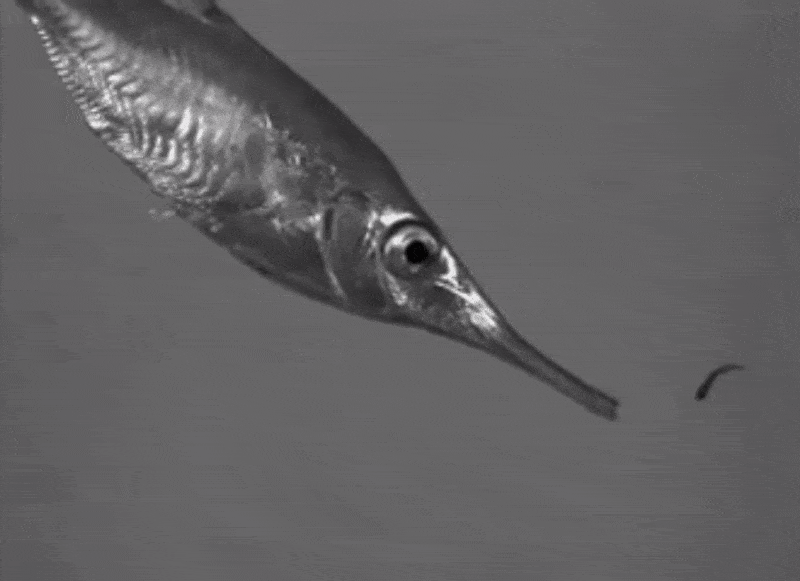The snipefish, an ocean-dwelling relative of the seahorse, has a very long, skinny snout ending in a tiny mouth. It feeds with an elastic-boosted head flick at almost unprecedented speed, new research finds.
“At as little as two milliseconds, it’s among the fastest feeding events ever recorded for fish,” says University of California, Davis, graduate student Sarah Longo, now a postdoctoral researcher at Duke University.

Snipefish, seahorses, and pipefish all have long, skinny snouts and use “pivot feeding” to capture food, Longo says, meaning that they pivot their head rapidly to bring their mouth up close to the prey and suck it in.
“Not only do they pivot, but they pivot faster than their muscles should allow,” she says.
Seahorses and pipefish get around this problem by storing energy in an elastic recoil mechanism. Longo wanted to know if snipefish were up to the same thing.
She first used high-speed video cameras to record snipefish feeding in the lab. Based on those videos, Longo was able to measure how fast the fish pivoted their heads and estimate the amount of energy involved.
The snipefish feeding strike took from two to 7.5 milliseconds from start to prey capture, with an instantaneous power requirement averaging 2,800 Watts per kilogram of body weight. The power estimates ranged as high as 5,500 Watts per kilogram.
Longo used micro computed tomography and digital X-ray imaging to examine the bones and tendons inside the snipefish’s head. She found that the fish use a latched elastic recoil mechanism—like a slingshot, or a compressed spring—to power their feeding strike.
Hydraulic system in fins gives tuna extra speed
“This mechanism behaves analogous to a slingshot, but instead of a rubber band, the fish stores energy in tendons,” Longo says. The mechanism involves a set of bones in the snipefish head and is latched in place by the specific arrangement of a small pair of hyoid bones located below the eye in the “cheek” region of the fish. With the hyoid latched, muscles behind the head put the tendon under tension. A small movement of the hyoid by a muscle releases the latch and unleashes the stored energy.
The discovery has implications for the evolution of this order of fishes, she says. Elastic recoil mechanisms are now known in three types of fish in two families in this group: Seahorses, pipefish, and now snipefish. That means that the mechanism may have evolved either very early in the history of the group, or evolved separately in the snipefish and the more closely related pipefish and seahorses.
The paper appears in the Proceedings of the Royal Society B. The National Science Foundation supported the work.
Source: UC Davis



